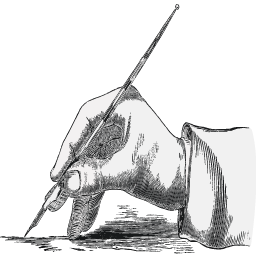Home
|
Products
|
9789356962026

Improving Almost Anything Ideas and Essays | Paperback
by Box
Highlights

9788126547074
ISBN

Box
Author

628
Pages

239 gm
Weight

English
Language

2014
Year

Revised
Edition

Paperback
Binding
₹1075
₹1195
The chapters of this book are from the recent writings of George E. P. Box, an acknowledged world leader in the application and theory of quality methodology to management, process improvement, process designand discovery. Box unique ability to explain complex ideas simply and appealingly with wit and cogent illustration is well known. It draws on profound knowledge and extensive industrial experience. In the past, these abilities have led to the creation of such techniques as response surface methods, time series analysis for forecasting and control, evolutionary operationand applied Bayesian methods. Over the past fifteen years, Box' work with many distinguished colleagues has been directed to the development and better understanding of quality techniques and how they can drive creativity and discovery. Published in celebration of the Second Edition of Box, Hunterand Hunter's STATISTICS for EXPERIMENTERS: DESIGN, INNOVATIONand DISCOVERY ((c) 2005), this incomparable volume is destined to remain the definitive reference on statistical quality for many years to come. Key features include: ¢ Five separate Sections on (I) management issues, (II) experimental design, (III) sequential investigation for discovery, (IV) process control for monitoring and feedback adjustmentand (V) reduction of variation and design of robust products and processes ¢ Edited by the guru himself, George E. P. Box ¢ Superb subject index and reference listing for easy access ¢ An additional key contribution from Stu Hunter foreword by (J. Stuart Hunter). Friends of George Box. My Professional Life. Part A: Some Thoughts On Process And Quality Improvement Introduction Good Quality Costs Less? How Come? When Murphy Speaks--Listen Changing Management Policy to Improve Quality and Productivity Scientific Method: The Generation of Knowledge Part B: Design Of Experiments for Process Improvement Introduction Do Interactions Matter? Teaching Engineers Experimental Design with a Paper Helicopter What Can You Find Out from Eight Experimental Runs? What Can You Find Out from Sixteen Experimental Runs? What Can You Find Out from Twelve Experimental Runs? Sequential Experimentation and Sequential Assembly of Designs Must We Randomize Our Experiment? A Simple Way to Deal with Missing Observations from Designed Experiments Finding Bad Values in Factorial Designs How to Get Lucky Dispersion Effects from Fractional Designs The Importance of Practice in the Development of Statistics Part C: Sequential Investigation And Discovery Introduction A Demonstration of Response Surface Methods Response Surface Methods: Some History Statistics as a Catalyst to Learning Experience as a Guide to Theoretical Development The Invention of the Composite Design Finding the Active Factors in Fractionated Screening Experiments Follow-up Designs to Resolve Confounding in Multifactor Experiments Projective Properties of Certain Orthogonal Arrays Choice of Response Surface Design and Alphabetic Optimality An Apology for Ecumenism in Statistics Part D: Control Introduction Six Sigma, Process Drift, Capability Indicesand Feedback Adjustment Understanding Exponential Smoothing: A Simple Way to forecast Sales and Inventory Feedback Control by Manual Adjustment Bounded Adjustment Charts Statistical Process Monitoring and Feedback Adjustment--A Discussion Dicrete Proportional-Integral Control with Constrained Adjustment Dicrete Proportional-Integral Adjustment and Statistical Process Control Selection of Sampling Interval and Action Limit for Discrete Feedback Adjustment Use of Cusum Statistics in the Analysis of Data and in Process Monitoring Influence of the Sampling Interval, Decision Limitand Autocorrelation on the Average Run Length in Cusum Charts Cumulative Score Charts Part E: Variance Reduction And Robustness Introduction Multiple Sources of Variation: Variance Components The Importance of Data Transformation in Designd Experiments for Life Testing Is Your Robust Design Procedure Robust? Split Plot Experiments Robustness in Statistics Split Plots for Robust Product and Process Experimentation Designing Products that Are Robust to the Experiment--A Response Surfacem Approach An Investigation of the Method of Accumulatin Analysis Signal-to-Noise Ratios, Performance Criteriaand Transformations Part F: Song There's No Theorem Like Bayes Theorem It's distribution Free I Am the Very Model of a Professor Statistical References Biography Books and Articals Written by George Box from 1982 to 2005 Index
Online store of medical books
Discover a comprehensive range of medical books at our online store. From anatomy and physiology to the latest clinical guidelines, we've got you covered.
Trusted by students, educators, and healthcare professionals worldwide. Browse top publishers and expert-authored titles in every medical specialty. Enjoy fast shipping, secure payments, and easy returns. Your one-stop destination for quality medical knowledge at your fingertips.
Whether you're preparing for exams or expanding your clinical expertise, our curated collection ensures you have the right resources at hand. Dive into detailed illustrations, case studies, and up-to-date research that enhance your understanding and practical skills.
We regularly update our inventory to include the latest editions and newly released titles, helping you stay current in the ever-evolving medical field. Our advanced search and filtering tools make finding the perfect book quick and hassle-free.
Join our community of lifelong learners and medical enthusiasts. Sign up for exclusive discounts, early access to new arrivals, and personalized book recommendations tailored to your professional interests.
